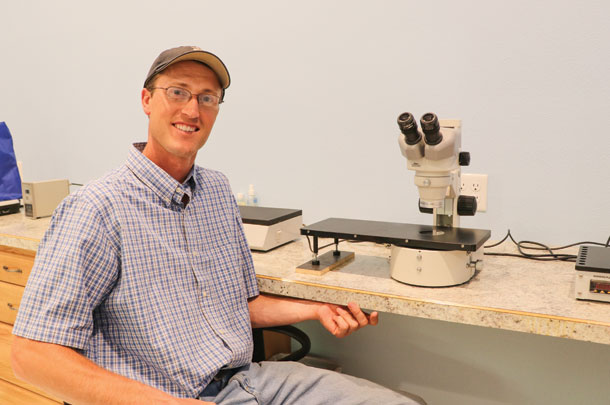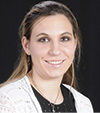Three Idaho dairy establishments have set out on a unique business venture by coming together to form WinStar Genetics in an effort to improve their herds and the Holstein breed.
Last September, Cannon Dairy was approached by John Andersen of Triple Crown Genetics, and his brother Greg Andersen of Seagull Bay Dairy, to enter into a partnership. Cannon Dairy agreed to combine forces and start out on the joint endeavor to become a global supplier of genetically elite embryos, females and males.
In this arrangement, Cannon Dairy houses donor females and provides in vitro fertilization (IVF) facilities for the company.
Goals and purpose
Veterinarian Dr. Kevin Crandall oversees Cannon Dairy’s genetic and reproductive programs, and he now also manages the day-to-day operations for WinStar Genetics.

No stranger to IVF, Crandall’s work with the dairy has focused on using this technology as a primary tool for improving the 7,500-head herd located in Shelley, Idaho.
Their initial strategy included working with a company to source embryos from cull cows collected at a slaughterhouse; however, in an effort to further advance genetics, they shifted to procuring oocytes from the highest genomic females within their own herd. “You get more bang for your buck, producing a better calf,” Crandall explains
Now, as part of the WinStar trifecta, he points out two goals that impact the Cannon herd’s breeding program and are also intertwined with the mission of the newly formed genetics company.
“The first goal in my mind is to improve the quality of the genetics for the whole milking herd,” Crandall says. “The whole reason we got into this thing is to increase the quality.” His primary goal for the herd has always been to focus on reproductive efficiency. He says they have tried different methods, including various shot programs, but the most successful by far has been through genetic improvement.
“The second goal is to produce elite genetics for the whole world, especially in the Holstein breed,” Crandall adds. “Marketing those genetics is what WinStar is really trying to do.” WinStar hopes to share their new, up-and-coming genetics with the rest of the Holstein world very soon.
Managing a new generation of elite genetics
The groundwork has been laid for a whole new generation of elite animals. All IVF calves are born and raised at Cannon Dairy. Around 120 of these calves, the first on the ground, were born in June, making up about 20 percent of the monthly calf crop. These animals are currently being genotyped, and they hope to soon have bulls born that will go into A.I., while also marketing their most elite heifers.
The donors used in the program, about 55 total, are all sourced from Seagull Bay and Triple Crown Genetics and housed at Cannon Dairy. The dairy has its own on-site ovum pickup (OPU) facility, equipped with a complete lab workspace – right down to a black-and-white, Holstein-spotted floor.
Every Monday and every other Thursday they aspirate animals in groups of 15 to 20. The rotation works so that each donor is collected every two weeks. They currently average 13 to 14 oocytes per pickup, though Crandall says they aim for 15 to 16.
Oocytes are shipped overnight to TransOva Genetics for fertilization. The lab ships back the fresh embryos in an incubator for placement on arrival. “In a perfect world, I’d do everything fresh,” says Crandall, noting the limiting factor is the number of available recipients. Extra embryos are frozen for later implantation.
The majority of donors are young heifers, while only a select handful are older cows. Post-calving, donor heifers are intended to join the milk string with the rest of the herd.
Careful monitoring goes into that first lactation. Those that perform and grow exceptionally well may stay with the donors as cows. The top 25 to 30 percent of calves procured from IVF will go on to be donors themselves; the rest will be regular replacements. The recipients, also heifers, have done quite well, averaging a 45 percent conception rate with the embryos.
Selecting for the best
The backbone of any successful genetic program lies in dam and sire selections. For this reason, Cannon and Seagull Bay begin by choosing only the highest genomic donors available. Crandall says they typically try and use donors with a Total Performance Index (TPI) of at least 2650 and Net Merit (NM) in the 800s and above.
Specific traits, including health, longevity, components and others, are also taken into account. “When you’re in the elite genomics world,” Crandall says, “you want the highest, the newest, the best, the first.” To accomplish this end, they also work with several stud companies using pre-released semen and young up-and-coming sires.
As with donors, high NM values and TPIs are also paramount in sire selection. “That’s rough to judge (on its own),” he says, “so certain families and different lines are also taken into consideration.” For example, Crandall says they are working on some lines with their polled donors to mate with sires that will result in polled offspring.
Crandall looks critically at Daughter Pregnancy Rate (DPR), something he believes is important for efficiency. “The one thing I’ve been focused on my whole career here has been on reproduction and increasing that efficiency,” Crandall says. “One thing I feel has helped us is focusing on the genetics aspect; things like DPR and choosing donors that have a higher score has been very helpful to us.”
The road to becoming established in sourcing elite animals is no easy feat, requiring time and a lot of work. Since beginning this program, Crandall says it makes up 80 percent of his duties as herd vet. “It’s a heck of a lot of fun,” he says. “I got into this a few years ago and didn’t see where it would take me now. It’s really cool to see these cows and watch them go on to produce truly elite animals.” ![]()
PHOTO 1: Some of the donors in WinStar’s IVF program are proven, older cows. These animals, collected every two weeks, are housed and milked with the Cannon Dairy herd.
PHOTO 2: Dr. Kevin Crandall has made reproduction and genetic progress a top priority during his time at Cannon Dairy. Photos by Audrey Schmitz.
Jaclyn Krymowski is a 2017 editorial intern.

-
Jaclyn Krymowski
- Editorial Intern
- Progressive Cattleman






